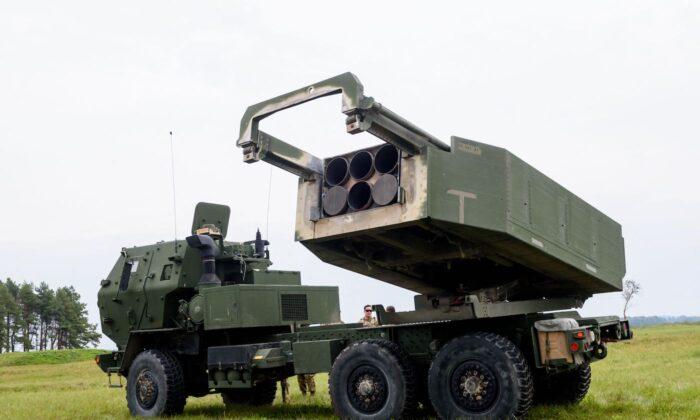Australia will acquire U.S.-made missile systems after the Ukrainian defense force praised the weapons for their effectiveness in deterring Russian troops.
The centre-left Labor government has finalised a contract to acquire 20 of the truck-mounted rocket systems, also called High Mobility Artillery Rockets (HIMARS), by 2026. It also signed another contract to buy Norwegian-made naval missiles by 2024.
The government has not officially revealed how much the package would cost but the deal is expected to cost taxpayers $1 billion (US$680 million) to $2 billion.The rockets have a range of 300 kilometres (186 miles), which is expected to increase to more than 500 kilometres as technology advances.
Cabinet minister Murray Watt said the increased range of the HIMARS rocket launchers would significantly boost Australia’s capabilities. The range of the Australian army’s current missiles is about 40 to 50 kilometres.
“One of the really key benefits of this is not just the mobility of these vehicles and these forces, but the range that those missiles can be fired,” Watt told Sky News Australia.
“We really want to make sure that our defence forces have the best equipment to keep Australian people safe.”
Meanwhile, Australian Strategic Police Institute’s (ASPI) Peter Jennings described the long-range rockets as “very, very portable” and could even extend beyond the 500 kilometre range.
“Anywhere you can fly an aircraft you can have one of these things operating very quickly,” he said, AAP reported.
“What we’ve seen in Ukraine is that they are incredibly accurate and that they can be moved quickly.”
Jennings also said Australia may only have 24 months to prepare for a conflict with China, with heightened tensions predicted to peak in the middle of the decade.Lessons From the Ukraine War
In a commentary in May 2022, Jennings said that Australia “must learn defence lessons from Ukraine.”“The message for democracies arming against the threat from authoritarian regimes is to select weapons that are simple and available rather than small numbers of expensive and complex ships, aircraft, and vehicles that may not survive the first hours of conflict,” he wrote.
“The Ukrainian experience demands that we ask how vulnerable our ships, aircraft, and military vehicles are to being destroyed in combat. The answer is that they are significantly at risk to a range of lower-cost missiles and weapons in Chinese military service.
Defence Minister Richard Marles said the high-end military capabilities will give the Australian Defence Force the ability to deter conflict and protect national interests.
Defence Industry Minister Pat Conroy said the new systems were at the cutting edge of modern military technology.
He told the ABC that the long-range missiles will give the Australian army “a strike capability they’ve never had before.”
“We’ll have an Army ground launched missile that can reach targets up to 300 kilometres away and we’re part of developmental program in the United States called the precision strike missile that’ll allow Army to hit targets in excess of 499 kilometres.”
AAP contributed to this report.



